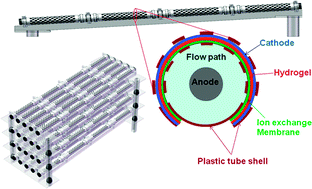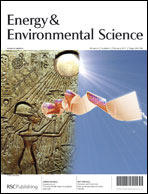Increasing power recovery and organic removal efficiency using extended longitudinal tubular microbial fuel cell (MFC) reactors
Abstract
The power recovery and COD removal efficiency, which depend on organic influent loading rate, have been studied in a high aspect ratio longitudinal tubular MFC reactor (liquid volume, 1 L). The power output from four anode/cathode pairs (modules) along the MFC's length was compared in two different modes of electrical connection (i.e. independently connected and connected in parallel to the loads). Independent connection to resistive loads for each of the four modules produced higher total maximum power generation than parallel connection (6% higher at 0.8 g l−1/d and 36% higher at 0.08 g l−1/d). The cumulative power production lengthwise along the reactor modules increased to 2.6 mW in the two higher OLRs tested (0.8 and 0.38 g l−1/d). However, at lower OLRs, the power tended to saturate at a lower level due to reduced organic concentrations in the later modules. Step perturbation of organic influent concentration from 960 to 22 mg


 Please wait while we load your content...
Please wait while we load your content...